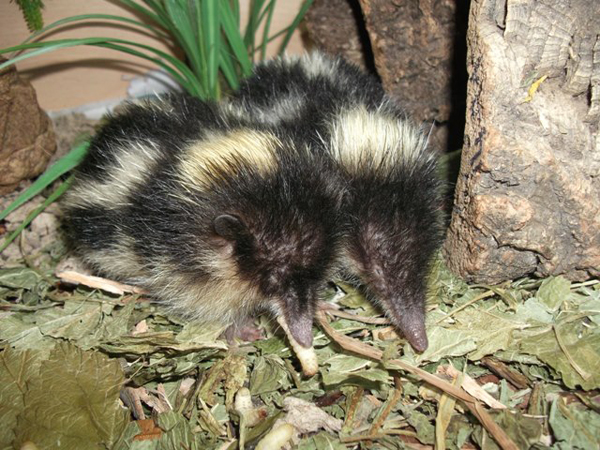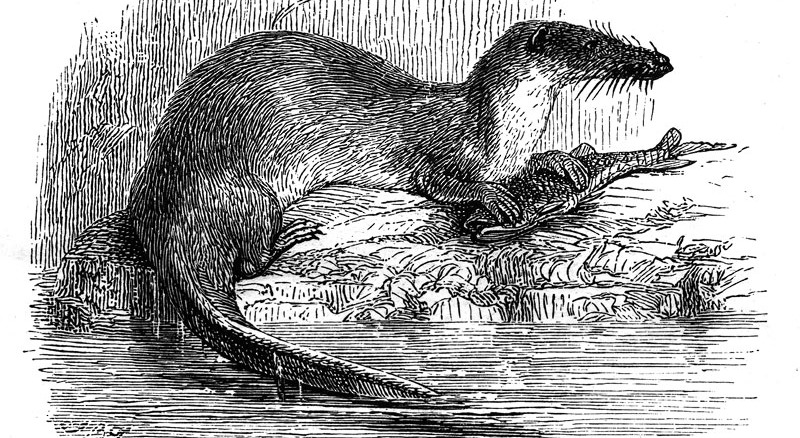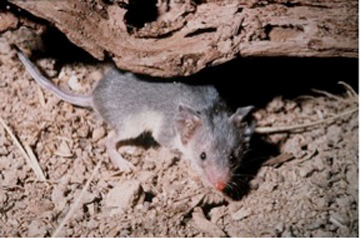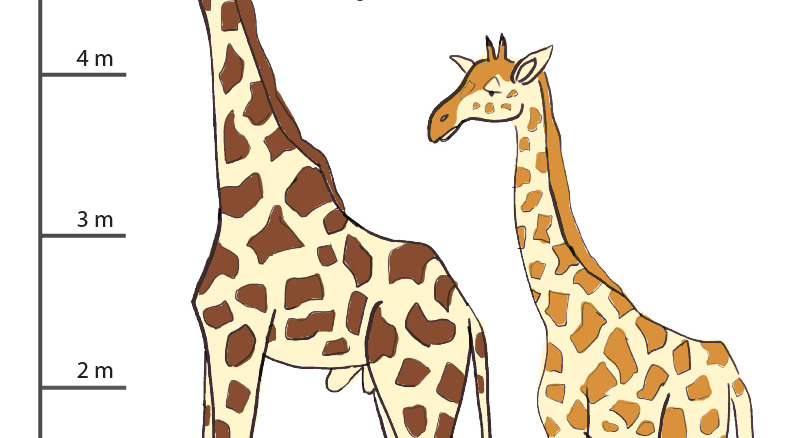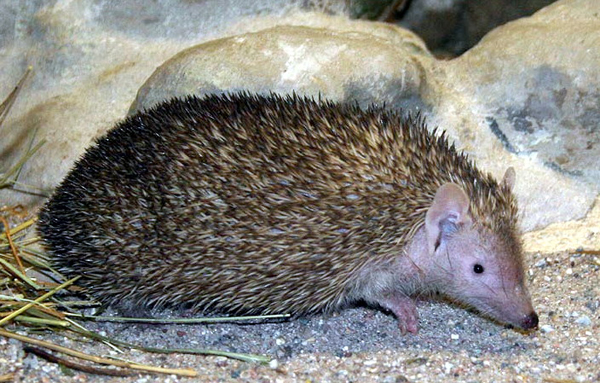By Stuart Short & David Brown*
You tromp through a low elevation rain forest in Madagascar and hear strange squeaks and chirps emerging from out of the plants below you.
You creep forward to investigate. Suddenly you see a group of animals unlike anything that you’ve seen before. Ten of them are sniffing along the ground with long pointy snouts that look almost like bird beaks. They are pretty small – maybe the size of a hamster. Their bodies are roundish and covered with spines like a hedgehog. They have the bright colors of a bumblebee with yellow streaks running down their bodies. To top it all off each of the animals has a bright yellow crown of spikes on its head.
So, have you been transported to another planet filled with these weird little animals that you have never seen or heard of before? Of course not!
You have encountered a family of lowland streaked tenrecs! These animals are not hedgehogs, birds, or bumblebees, even if they look like a hodgepodge of these animals smashed together. They are one of many species of tenrecs living on Madagascar.
Lowland streaked tenrecs look unlike any other tenrec species except for their cousins who live in high elevation rain forests. Highland streaked tenrecs are as spectacularly weird as their lowland cousins, but they have white streaks like racing stripes running down their sides instead of yellow ones.
Streaked tenrecs are very social animals and live in family groups with both males and females. They are the only kind of tenrec that lives in family groups.
Streaked tenrec families forage in the forest for soft-bodied invertebrates such as worms and beetle larvae. They have very fragile jawbones and can only eat soft food, which means their entire diet is soft-bodied invertebrates and a small amount of fruit. If they tried to eat anything harder it could damage or even break their jaws!
Sometimes streaked tenrec families get separated in the forest and need to communicate with each other. A streaked tenrec has special spines on its back that it can rub together to produce high-pitched squeaks and chirps, like a violinist running her bow across a violin string. This process is called stridulation. Crickets and other insects commonly use stridulation to communicate, but streaked tenrecs are the only mammals that are known to stridulate.
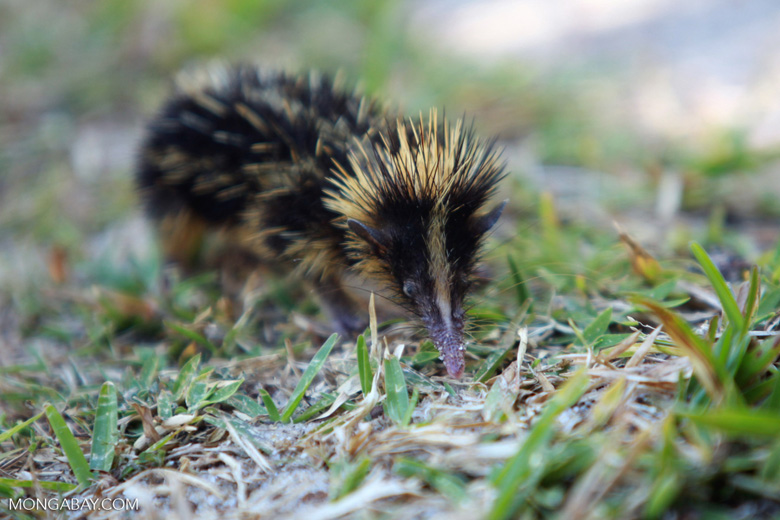
Humans cannot hear streaked tenrec stridulation because it happens at sound frequencies that are too high for human hearing. Scientists need a special ultrasound microphone to pick up the sounds of tenrec stridulation. Scientists have noticed that the stridulation clicks get louder the higher a streaked tenrec raises the crown of spikes on its head.
Streaked tenrecs are rarely kept in captivity due to their short lifespans and the need to keep them in groups or at the very least pairs. Zoos and private keepers are working to build a population of these animals in captivity so that people around the world can learn about the marvelous freakiness, streakiness, and squeakiness of the lowland streaked tenrec.
*This article previously appeared on kidsnews.mongabay.com

